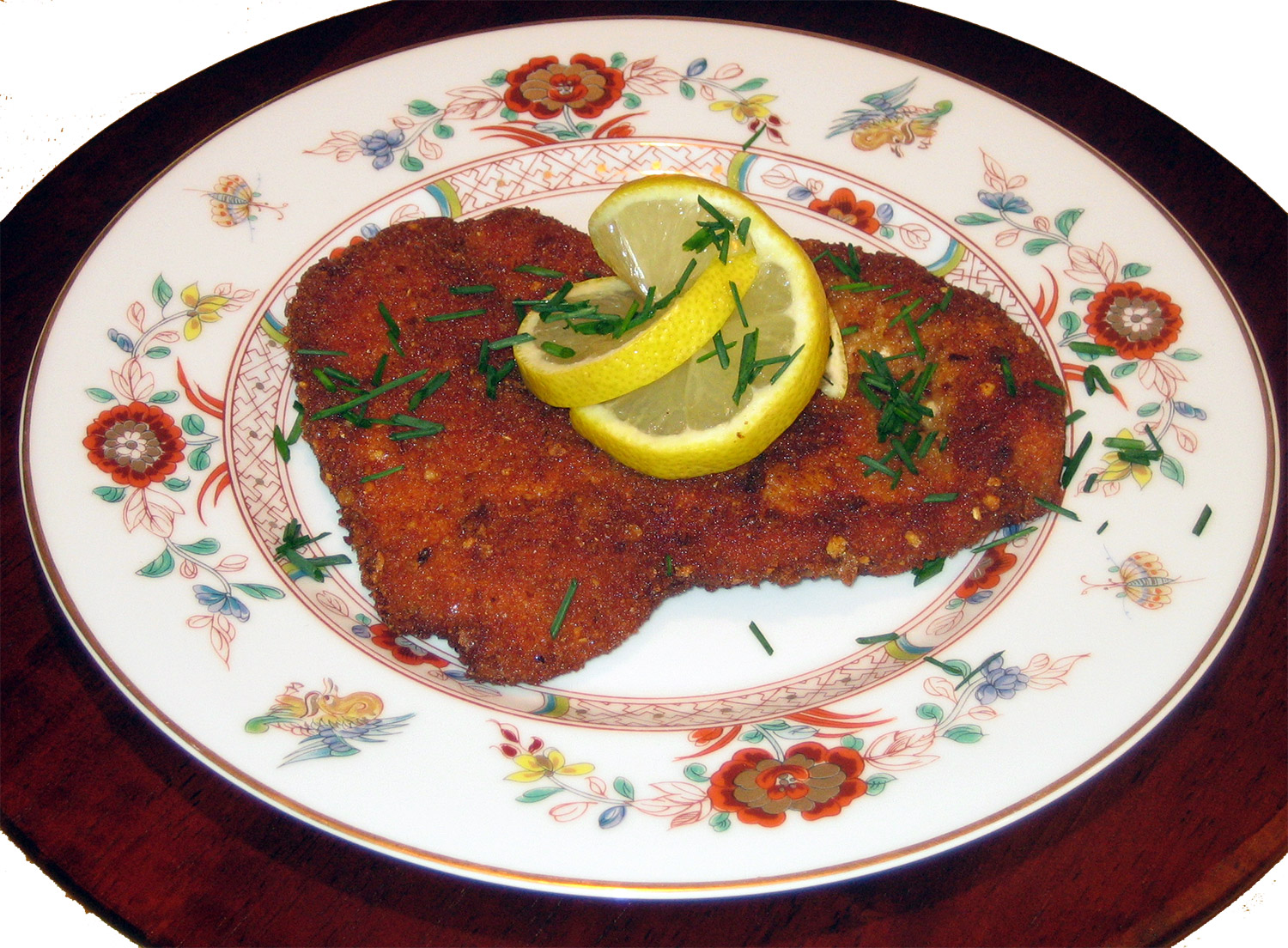
This basic technique for breading cutlets can be applied to thinly sliced leg of veal, pounded veal rib chops, different types of fish fillets and shrimp, as well as various vegetables. In order to do this procedure quickly, efficiently and enjoyably, you must first set up your ingredients in an assembly-line fashion. Personally, when it comes to breadcrumbs, I only use those I deem “the best” which are made from best-quality toasted and pulverized crusty Italian bread, with sesame seeds on top. You can, if desired, use half of those crumbs and half store-bought panko crumbs, which will yield cutlets with a crispier, flakier finish.
The addition of the Parmigiano-Reggiano cheese to the crumb mixture makes these cutlets taste (and smell) even more amazing. The cutlets may be served hot, at room temperature or cold for sandwiches. The “lemon twists” are a fun and attractive way to present the chicken cutlets.
Any time I’ve suggested a tool, a piece of equipment, or a culinary term that’s unfamiliar to you, you can go to Learn to Cook for more information.
Place flour on a plate and season lightly with salt and pepper. Combine bread crumbs with Parmesan cheese on a shallow baking sheet. If desired, press 1 clove of the garlic through a garlic press into the beaten egg; mix with a fork. Position eggs in between the flour and crumbs.
Sprinkle prepared cutlets lightly with salt and pepper. Dredge each one in the seasoned flour to coat well and shake off the excess. Dip chicken into beaten eggs to coat thoroughly. Working with 1 cutlet at a time, lay the egg- coated cutlet on top of the crumb mixture and turn to coat each side, pressing gently to help the crumbs adhere. Lay the heavily breaded cutlet on a large tray or baking sheet. Once you’ve finished breading all of the cutlets, if time allows, cover the tray with plastic wrap and chill for an hour (or over night), which encourages the crumbs to adhere.
Arrange a long double thickness of paper toweling on your kitchen counter, as close to the stove as safely possible. Heat a 12-inch nonstick skillet over medium-high heat and, when hot, add enough olive oil to generously coat the bottom of the pan. If desired, bruise 2 of the garlic cloves and add to hot oil. Sear garlic, pressing to release its flavor into the oil. When just golden, remove garlic and discard (or enjoy).
Add butter to hot oil and when bubbling, fry 2 cutlets at a time until golden brown and crisp on both sides, about 4 minutes per side. (Use a turning spatula occasionally to press gently on the center of the cutlet to avoid uneven cooking. Use 2 nonabrasive spatulas to turn cutlets safely.) When cooked through, drain each cutlet on paper toweling. Place on a hot serving tray and, if desired, keep warm in the oven until all the cutlets are cooked. If butter becomes overly dark while frying or if there is an accumulation of dark crumbs on the bottom of the pan, dump out the oil, wipe out the skillet and add more oil, garlic and butter before frying the next batch.
First use a vegetable peeler to remove any stamped letters from rind. Slice lemons into 1/4 inch rounds and lay on a flat surface in pairs of 2 slices. Using a sharp knife, slit 1 slice from each pair, from the center of the slice through 1 side of the rind. Slit the remaining slices from just below the top rind through the bottom rind. To form decorative twists, lift the slice with the smaller cut, twist the cut portion in opposite directions and place twisted slice on the counter. Then lift a slice with the large slit and twist the slit open as you lay it over the bottom twist. The design will look like a flower or spoke pattern. (For a two-toned look, use a lemon and lime slice for each twist.)
If serving individual portions, lay each cutlet on a plate and position a lemon twist on top. Sprinkle lightly with freshly chopped Italian parsley. Alternatively, serve the cutlets on a warmed platter as suggested in the introduction to this recipe.
If impeccably fresh, the cutlets may be breaded and placed on a shallow baking sheet up to 2 days ahead. Cover well with plastic wrap and refrigerate. Assembling them several hours ahead and chilling will encourage the crumbs to adhere better through frying.